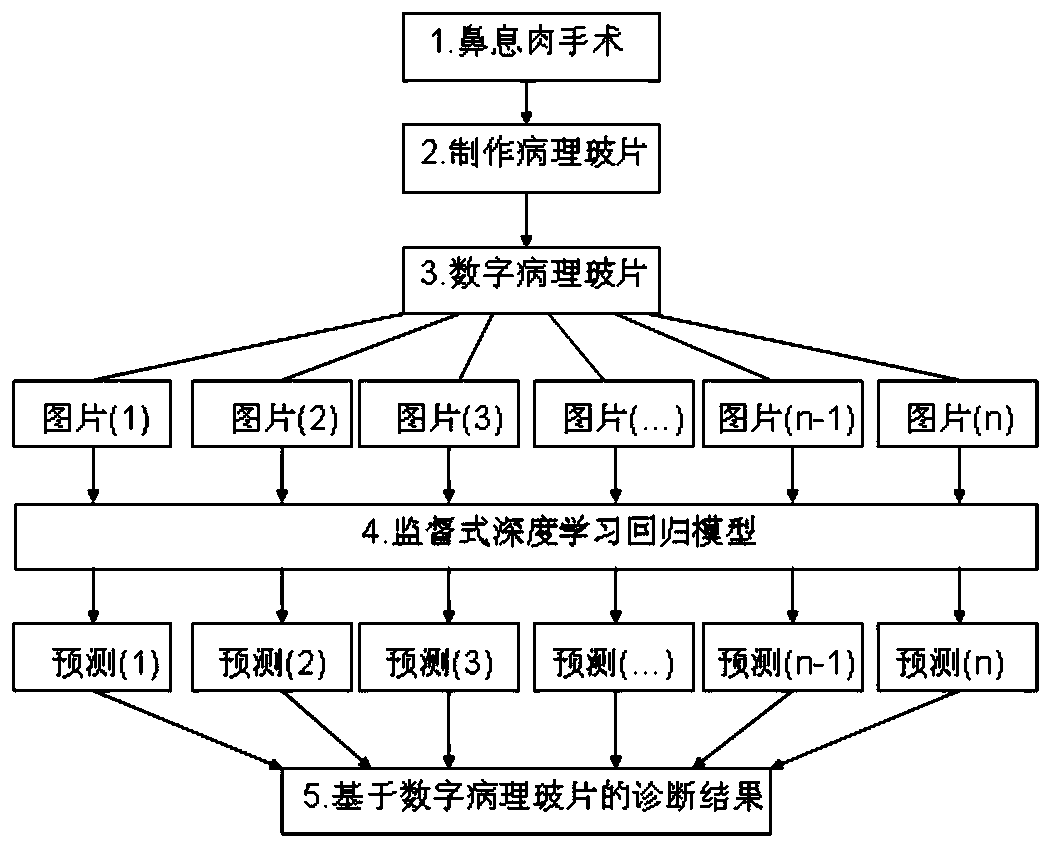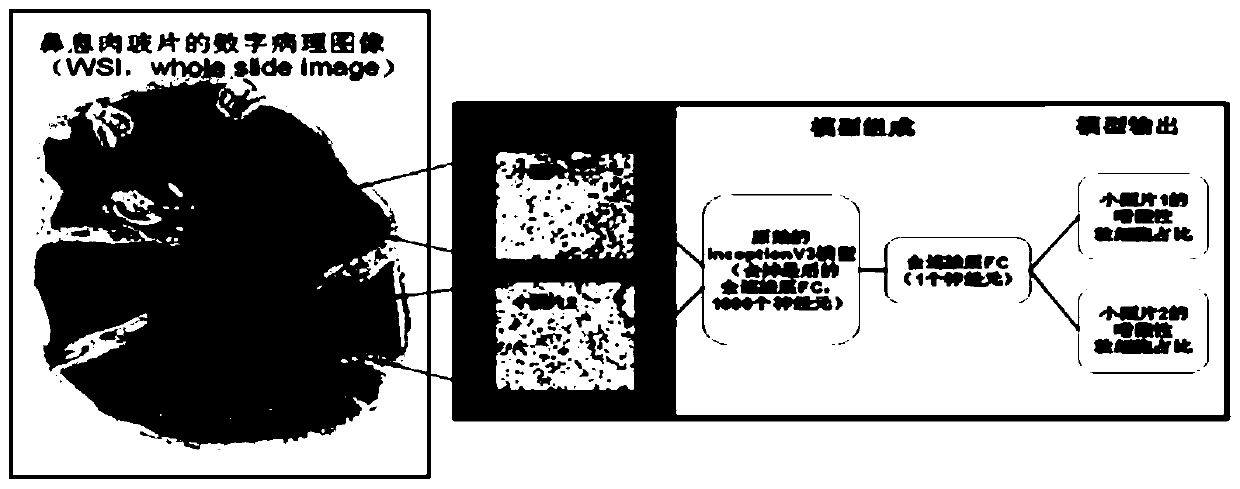Method for establishing eosinophilic granulocyte proportion model by utilizing nasal polyp pathological picture
A technology for eosinophils and nasal polyps, which is applied in the field of establishing eosinophil proportion models using pathological pictures of nasal polyps, can solve the problems of measurement deviation, high time cost, lack of accuracy and timeliness of auxiliary diagnosis system, etc.
- Summary
- Abstract
- Description
- Claims
- Application Information
AI Technical Summary
Problems solved by technology
Method used
Image
Examples
Embodiment Construction
[0024] The technical solutions in the embodiments of the present invention will be clearly and completely described below in conjunction with the accompanying drawings in the embodiments of the present invention. Obviously, the described embodiments are only some of the embodiments of the present invention, not all of them. Based on the embodiments of the present invention, all other embodiments obtained by persons of ordinary skill in the art without creative work all belong to the protection scope of the present invention.
[0025] The present invention utilizes nasal polyp pathological picture to establish the method for eosinophil proportion model, comprises the following steps:
[0026] (1) Data preparation: Nasal polyps are made into slides, and then scanned by a digital pathology instrument to obtain a WSI image, and the WSI is cut to obtain a small pathological image. WSI is the abbreviation of whole slide image, that is, a digital pathological image;
[0027] In the d...
PUM
 Login to View More
Login to View More Abstract
Description
Claims
Application Information
 Login to View More
Login to View More - R&D
- Intellectual Property
- Life Sciences
- Materials
- Tech Scout
- Unparalleled Data Quality
- Higher Quality Content
- 60% Fewer Hallucinations
Browse by: Latest US Patents, China's latest patents, Technical Efficacy Thesaurus, Application Domain, Technology Topic, Popular Technical Reports.
© 2025 PatSnap. All rights reserved.Legal|Privacy policy|Modern Slavery Act Transparency Statement|Sitemap|About US| Contact US: help@patsnap.com



